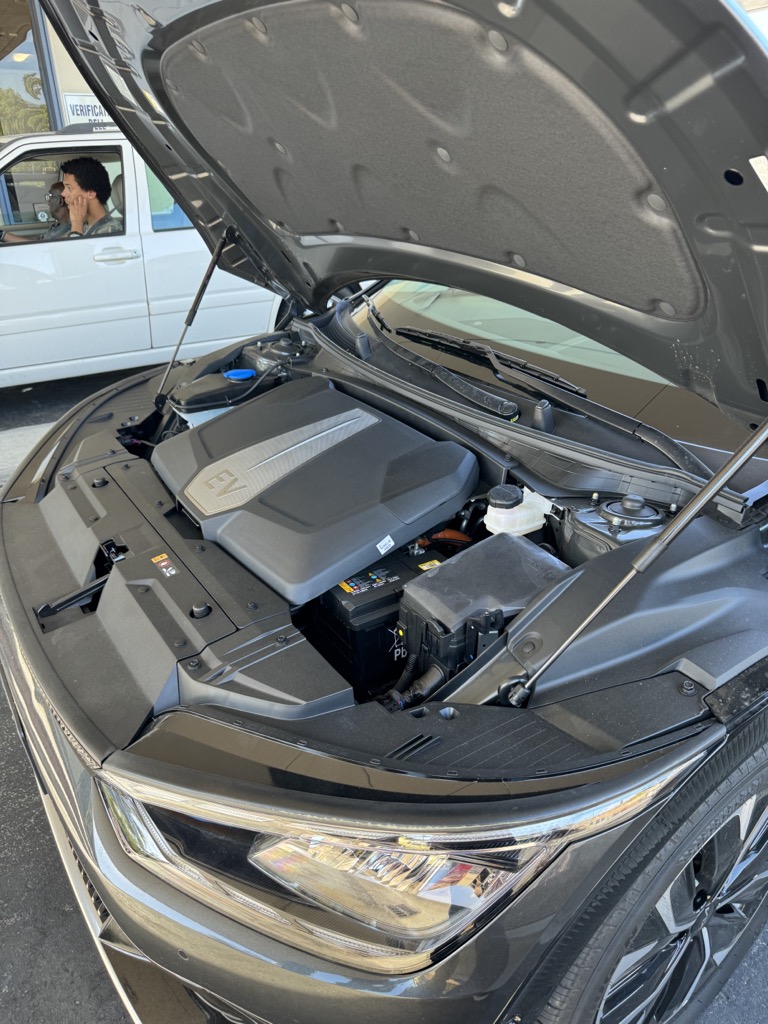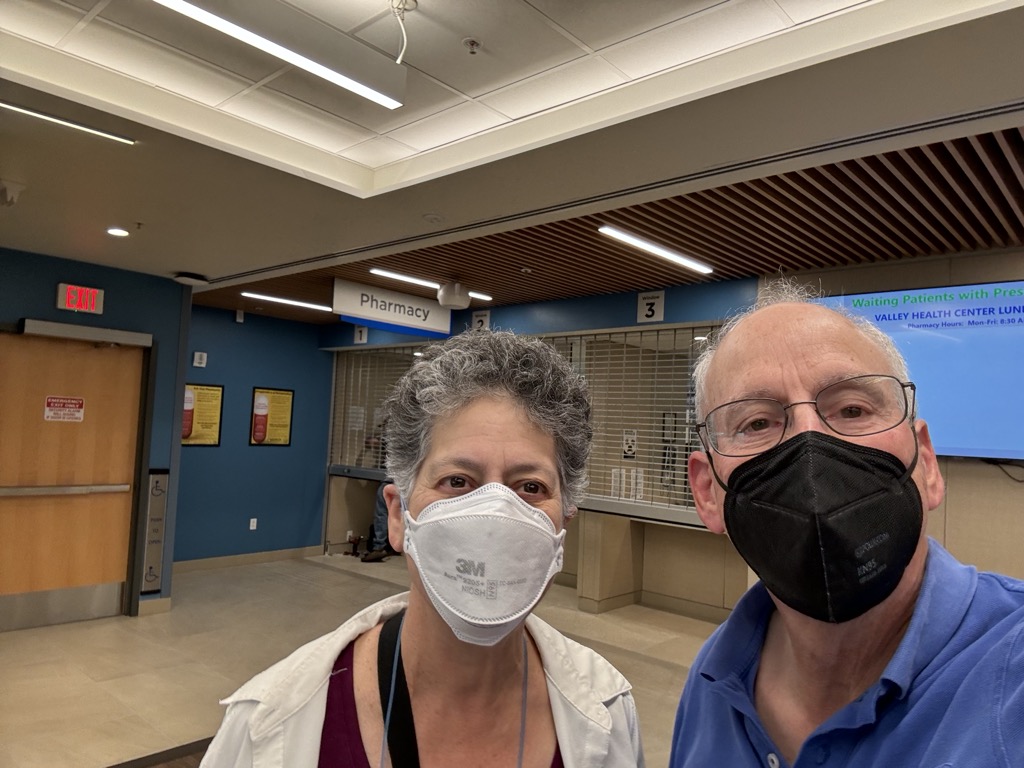I’d applied for Clean Air Decals for the EV-6 in late August, as soon as I had my ham radio license plates officially transferred to the car. I didn’t expect to get the decals quickly, but I did hope they’d be in my hands soon after we got home from Europe. I was surprised when the envelope the DMV sent me a few days ago didn’t have the decals; instead, it contained my application and check and a note saying they couldn’t process my application because “Car Title Surrendered 9/1 – AZ”.
I used the DMV’s online chat to talk with an agent who told me I could bring the title to DMV or AAA to “update its status”. Needless to say, I chose AAA – who couldn’t figure out what to do, so they sent me to the DMV.
I picked a good day to go to the DMV; there were hardly any lines. I was at a window in under ten minutes, and explained the situation to the agent. She looked some things up on her computer and brought me to another agent, Meeta, who she said could actually fix the problem. I explained the situation to Meeta, who spent more time in communion with her computer and said that it appeared that when my old car was sold by Carvana, somehow the title for the new car got into the process (I guess because both cars had the same license plate number, my ham call) and was cancelled. But she could fix it.
More typing, and then she told me to go out to my car and drive it over to the “Verification Lane” so they could officially verify that the car had the proper VIN for the title that I was holding in my hand. That took a few minutes; at one point, the verifier apologized because, even though the car was electric, he had to look under the hood to check that there were no smog problems.

There were no smog problems and all of the VIN labels were correct, so he handed me a “Verification of Vehicle” form and cautioned me not to sign it or it would become void. I took the form back to Meeta and watched her type for a few minutes. She said all that remained was for her to call DMV Central in Sacramento and have them uncancel the title.
Meeta called Sacramento and spoke with someone who put her on hold. I could hear the hold music from her phone as she waited for an answer. Ten minutes later, the call dropped. She called back and kept holding (she processed quite a few driver’s licenses while she was on hold – I was impressed!), and eventually got through to someone. A bit more conversation, and then she hung up the phone and told me that Sacramento was going to call her when everything was set. She told me that I didn’t need to wait around any longer and promised to call me by the end of the day with the results. I was a little hesitant to leave, but I’d already spent two hours at the DMV; I went home to wait.
Half an hour later, Meeta called to tell me that all was well and that I could resubmit the application for the decals.
I guess I’ll find out if everything is really in order in another couple of months.
